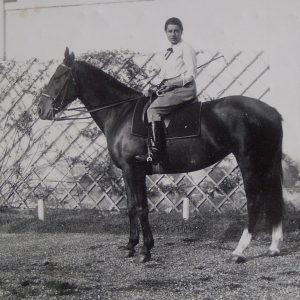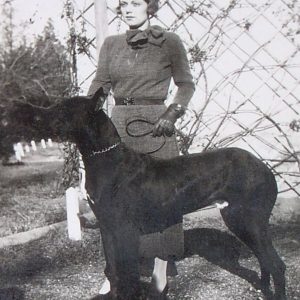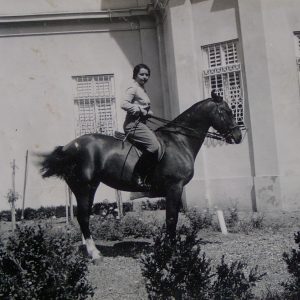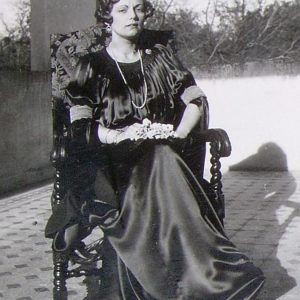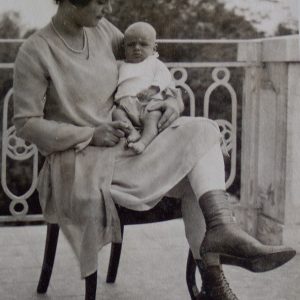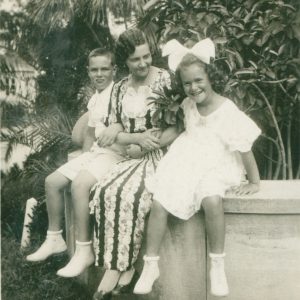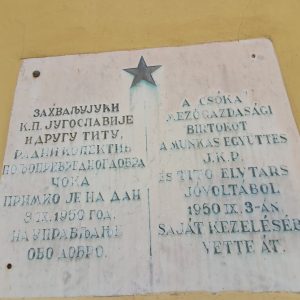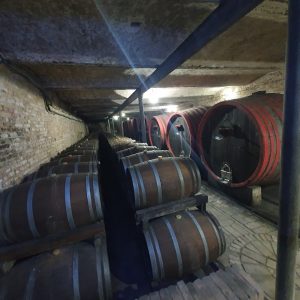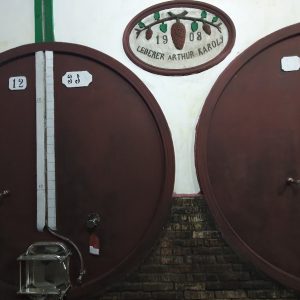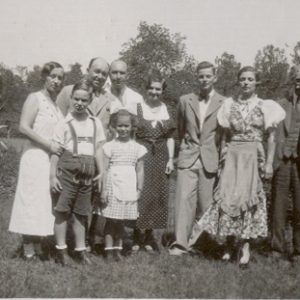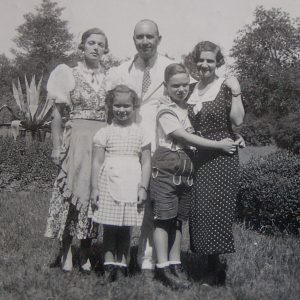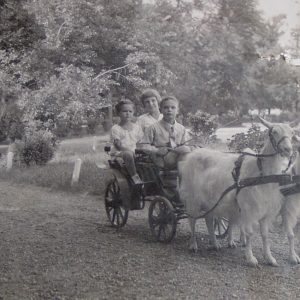In the north of Banat County, in the little town of Čoka, there are the remains of the former business empire of the Jewish family Lederer who survived the Holocaust and settled in South Africa, where Magda Lederer (age 92) still lives with her descendants
Lederer Castle is located in an unrealistically beautiful but completely empty park in the centre of Čoka, in a former court garden. We left our bicycles next to the trees in the park and walked around the carpet of fallen leaves around the locked castle.
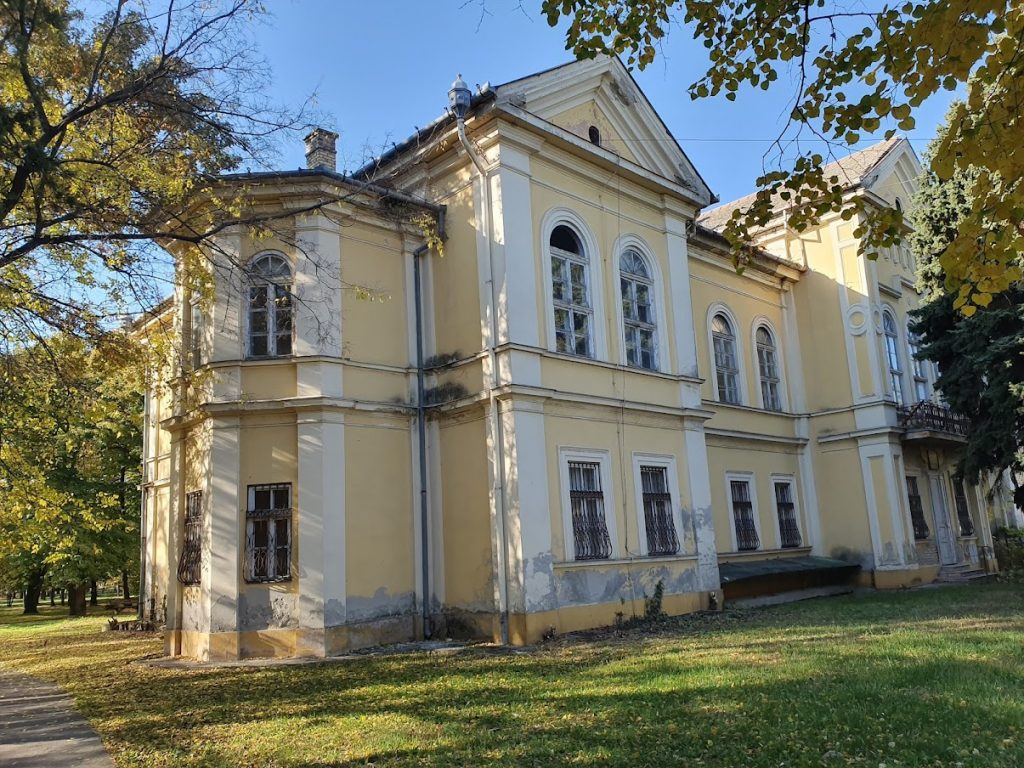
The castle was built after 1781 when Lerinc Marczibanyi bought the wasteland that was then Čoka. The construction of the castle was completed only by the next owner, Karolyi Schwab, around 1870. Arthur and Karolyi Lederer bought the property in the late 19th century. The Lederers, one of the richest Jewish families at that time, were the owners of this property until the Second World War broke out.
Although corroded by moisture, the building is in relatively good condition (compared to most other castles in Vojvodina) and is categorized as a cultural monument of great importance. At the back of the castle, there is a marble plaque that reads: “Thanks to the Communist Party of Yugoslavia and Comrade Tito, the working collective of the Čoka Agricultural Estate received this property on September 8, 1950”.
A woman who passed by literally cried with happiness when she heard that there was a project called “Castles of Serbia – Protection of cultural heritage” which plan is to revitalize castles throughout Serbia: “From your lips to God’s ears – you made my day! I have been watching this eyesore for years and my soul hurts when I see it.” Locals say that it was easier to enter the castle in Lederer’s time than it is today.
“The cellar looks imposing and the huge barrels are well-preserved, unlike those in the Erdevik Winery. With a few touch-ups here and there, this could become a first-class tourist attraction”
We continue our journey further out and enter the grounds of Čoka Winery. We ask an employee to direct us to someone who can tell us something about the history of the winery and show us the cellars and he points to the director’s PA in a cottage located at the far end of the winery’s grounds.
A 67,000-LITRE-VESSEL
While we are waiting for the guy who is supposed to take us around the winery, I look at an unusual sight in a large glass box. A huge stuffed bird is staring at us. It’s the Great Bustard, which is the heaviest flying bird in the world. It inhabits mainly the steppe regions of Europe and Asia. Bustard males are 90-110cm long, with a wingspan of between 2.1 and 2.5m. They usually weigh 10-16kg, although the largest recorded specimen weighed 21 kg. Today, there are only eight of them in northern Banat.
Nenad, a dark-haired guy in a white coat, arrives and takes us to the cellar of the Čoka Winery while telling us the story of its turbulent history. The first chapter of the story about the Čoka Winery begins in 1903 with the construction of a magnificent wine cellar. With the construction of the second part of the cellar, which housed concrete vessels, lined with tiles on the inside, the Lederer winery entered a new phase of development in 1908. One of the main attractions of this part of the cellar was the now-famous vessel that could hold more than 67,000 litres of wine. In it, Lederer played cards with other men, accompanied by gipsy musicians, with games lasting for several days.
The last and according to many the most beautiful part of the basement with a wooden barrel which is part of its famous seventh street was completed in 1912. As the basement is located four metres below the level of the river Tisza, Lederer solved the problem with dampness by building a functional drainage system, based on highly hygroscopic sand, which is sprinkled on the bottom of the basement and is replaced several times during the day with a new batch which had been previously dried in the sun.
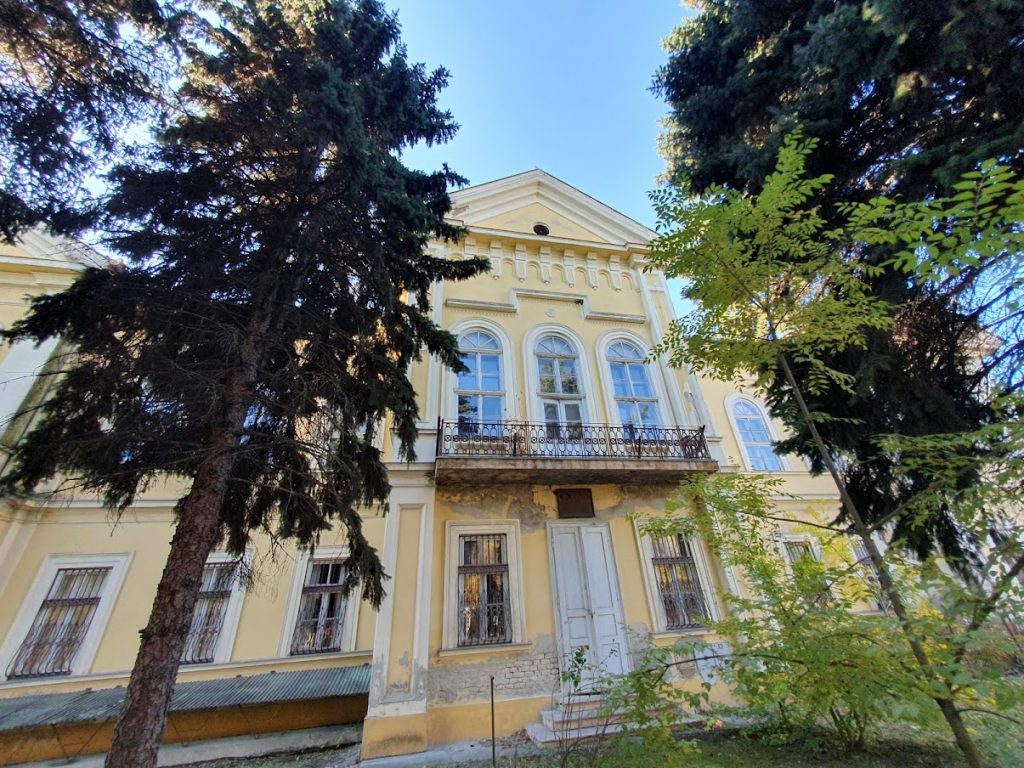
The cellar looks imposing and the huge barrels are well-preserved, unlike those in the Erdevik Winery. With a few touch-ups here and there, this could become a first-class tourist attraction.
Historical archives testify that the Lederer family came from Budapest in the early 20th century when they bought a castle in the town centre and a winery.
Lederer’s estate is described in superlatives in 1938 – 200 hectares of vineyards, huge pigsties with a 15,000-strong drove, thousands of oxen, 400 hectares sown with flowers, whose seeds are exported to England, wine cellars with over one million litres of wine, a power plant, a distillery and a meat processing facility. Lederer’s wines reached the British court, of which there are historical records.
THE WEDDING OF KING ALEKSANDAR
A few days after our visit to the castle and winery and my posts on social networks, Dragan Komlušan from Čoka sent me a recording of a TV show in which he and other guests talk about the turbulent history of the Lederer family, as well as a dozen precious photos from the life of this important family. One photo features Magda Lederer (now 92 years old) with a big white bow on her head in the company of her mother and brother; the other photo shows children are riding in a “goat’s carriage”; then there is her mother Magdolna dressed in the latest fashion from Paris, tennis courts in the park, Djordje Lederer on horseback, etc… There is also one colour photo among all these black and white photos – Magda with her grandchildren and great-grandchildren celebrating her 89th birthday in 2018.
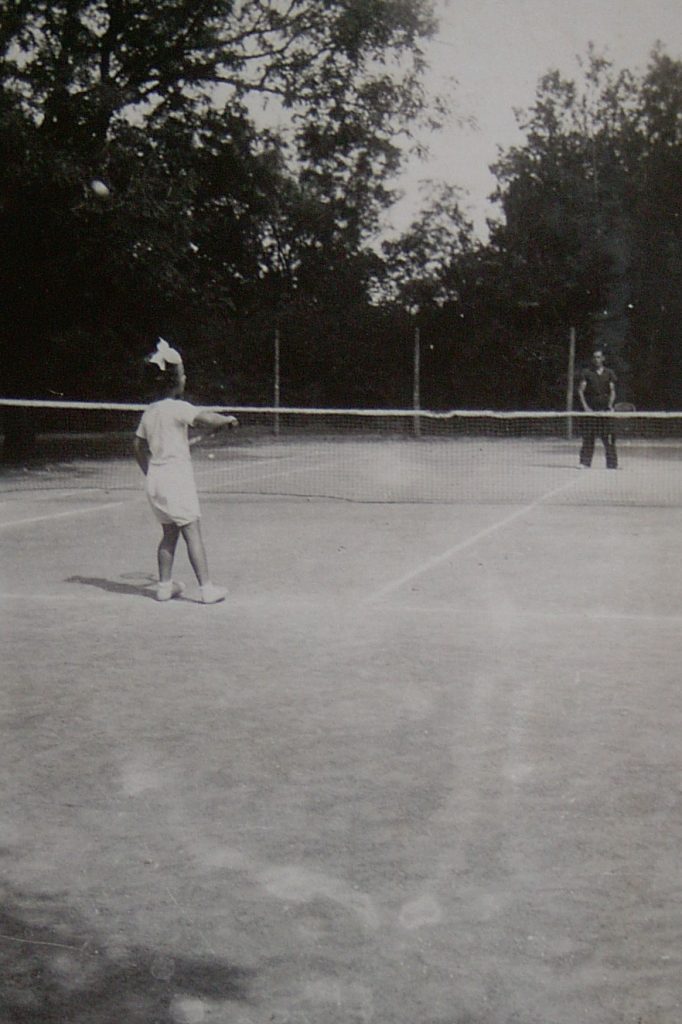
How did it all begin? Paulina Schwab and Jacob Lederer from Budapest had two sons – Arthur and Karolyi. Arthur took over the property in Čoka and moved here. Married to Alice Levy, he had three sons: the eldest, Istvan, died on the Russian front in the First World War, his middle son, Laszlo, falsified documents and went to war as a minor, from which he returned alive but subsequently died of the Spanish flu after the war, while the youngest, György (Djordje, in Serbian) studied to be a banker and later took over Lederer’s property. In 1927, György married Magdolna Reinprecht, with whom he had two children – Magda, who is still alive, and György Jr.
Dragan Komlušan’s grandfather worked as a cook at Lederers’ place, so he heard stories about the family from him: “They also took care of the poor – 150 meals would be cooked every day for those who had nothing to eat. Also, at Christmas, Lederer would give gifts to his employees, which was practically half of the people in Čoka. It was mostly wine and brandy from his vineyards.”
“If you come across the Lederer wine in a restaurant, make a toast to the part of the family that led the economic progress of one part of our country”
In 1929, Lederer’s estate won the Grand Prix at the World’s Fair in Lisbon. They say that Lederer had excellent relations with King Aleksandar Karadjordjević, to whom he always sent gifts. “At the wedding of King Aleksandar and Romanian Princess Maria, Lederer sent my grandfather and his brother to be the cooks at the royal feast,” says Dragan Komlušan.
In the park of the castle in Čoka’s centre, there were tennis courts and tennis coaches came regularly. There were several fountains and a greenhouse where Lederer grew tropical flowers. In 1960, a fire broke out after which destroyed the castle’s roof that was subsequently replaced. In the same year, the fence around the castle and the park, which was made in the Art Nouveau style, was demolished and its parts were spread all over the country, most of them around some army generals’ villas in Belgrade. Since then, the park has been a public space.
In agreement with the Lederer family, the Korhec family came from Subotica to Čoka to start the meat industry that made this place famous, and today, as one of the many victims of the transition that ravaged many places in Vojvodina, the Čoka Meat Company had declared bankruptcy and closed.
Lederer’s and Korhec’s children, as the “golden youth” of that time, played together, practised tennis, and had private language teachers.
STEVAN RAIČKOVIĆ’S STORY
In the short story titled “Mr. Lederer’s Carriage”, which was published in the collection of short stories called “The Big Yard” (“Veliko Dvorište”), the book’s author, Stevan Raičković, describes an interesting episode from the life of the young Djordje Lederer. The new school year has begun. The children in the class all already know each other. One morning a black carriage stopped in front of the school. A large man came out of it, followed by a chubby boy. They both entered the school building. Shortly afterwards, a school attendant comes to the classroom and calls the teacher to come out for a moment. On the way back, the boy from the carriage entered the class with the teacher. His name was Djordje Djurika Lederer and he was a new student. He was the son of Mr. Lederer, a wealthy landowner from Čoka, a town across the Tisza River. He sat with the poorest boy in the class, Zeković, at the same desk.
Djurika shared his hearty snack with the boys from the first desk. As children do, they started to use Djurika soon after. Once, Djurika accidentally dropped a bit of ink on Zeković’s cap which caused a general uproar, at which point Djurika swiftly went to the store and bought the little Zeković a brand new, beautiful cap. Since then, other children have tried desperately to have Djurika drop a bit of ink on their attire too. As it happens, he had to buy a boy whose surname was Ćeranić a new plaid jacket, after his coat was “accidentally” destroyed by the ink. A boy who went by the name Čamprag accused Djurika of spilling the entire content of an inkwell on his winter coat. This time around, the pupils took Djurika’s side and Čamprag was forced to wear a coat with an ink stain all winter. When the classes were over, everyone could hardly wait to gather around the carriage that came to pick up Djurika. Some would jump on its back end and thus rode all the way to the bridge over the Tisza. From there, everyone would leave for their homes.
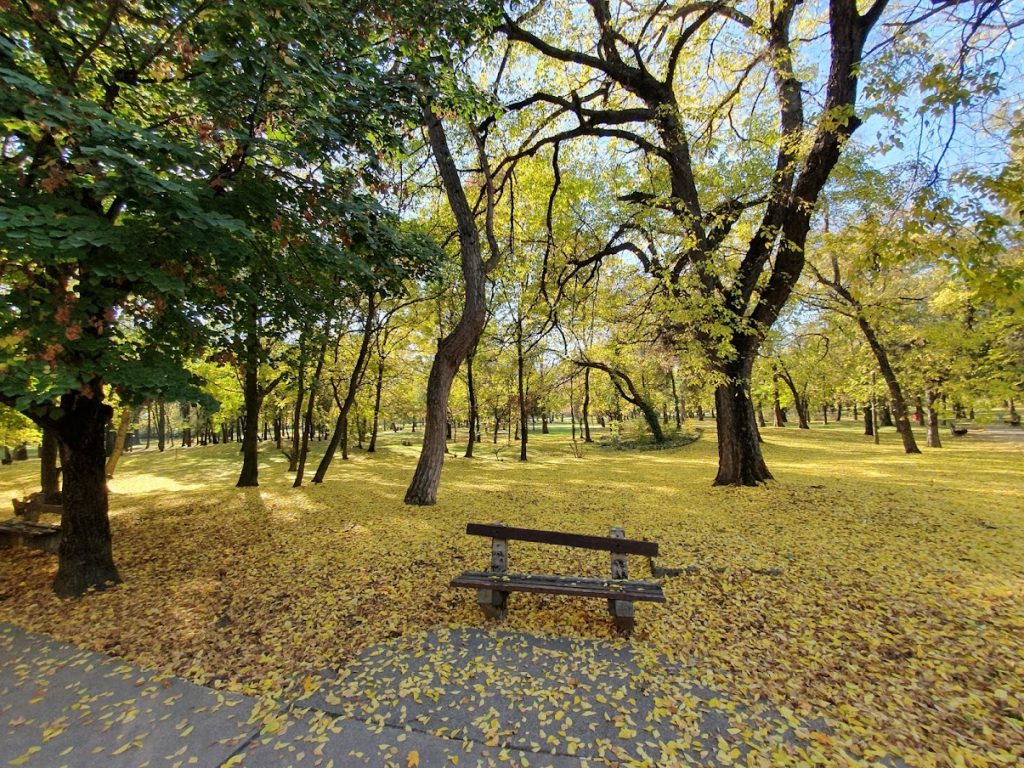
“WAR PROFITEERS”
Karolyi Lederer died suddenly in 1930, and the family collapse began there and then. In 1933, they sold a house in Budapest. In 1941, German troops entered Banat, and the entire property of the Lederer family was seized by the Nazi official Hermann Goering, who gave the previous owners four hours to escape. The Lederers went to Senta first, because, in Bačka County, which was under the control of Horthy’s Hungary, the organized Holocaust against the Jews was not carried out, as was the case in Banat under the Germans and Srem, which was then part of Nazi Croatia. Only after the fall of Horthy and the German occupation of Hungary in 1944, Hungarian Jews were sent to Auschwitz.
The Lederer family managed to avoid such destiny because they fled from Senta to Budapest, where, hiding in the basements of the big city, they awaited the end of the war. In 1945, they returned to Yugoslavia, expecting that their property would be returned to them as surviving Jews. However, the new authorities were only slightly more merciful than the Nazis – the Lederers were accused of war profiteering and sent to prison. Two years later, after being released from prison in 1947, they managed to escape to London and then in 1948, to South Africa, where the Lederer family still lives to this day.
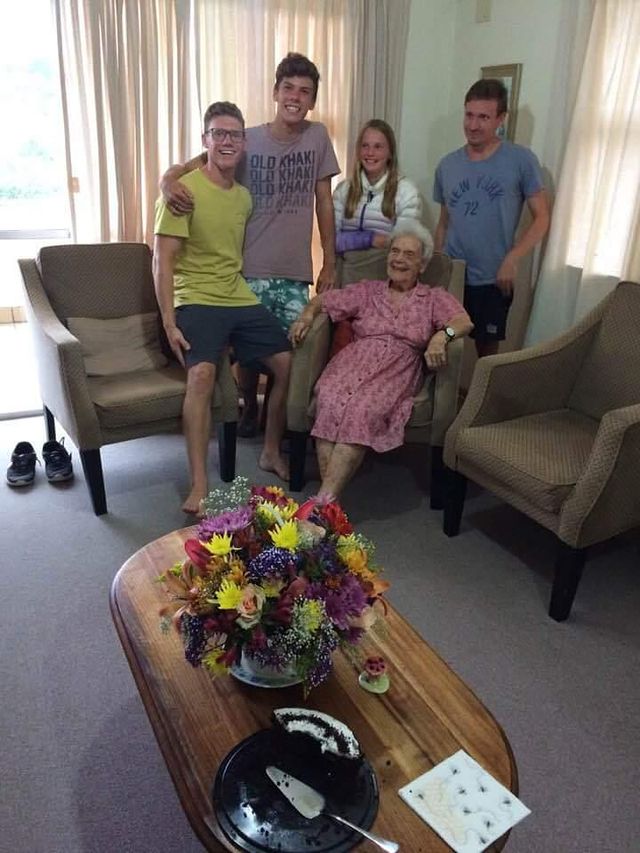
Magda Lederer, now 92 years of age, visited Čoka in 2004, where she and her legal team began a restitution process, following which about 800 hectares of land were returned to her. When she visited the winery, she said, she was happy that at least something was left of her father’s business empire, and she allowed the current owners to use their family name for the first line of their wines.
If you come across the Lederer wine in a restaurant, make a toast to the part of the family that led the economic progress of one part of our country. And yet, today, we are not even capable of slapping a bit of paint to the buildings they left behind.
